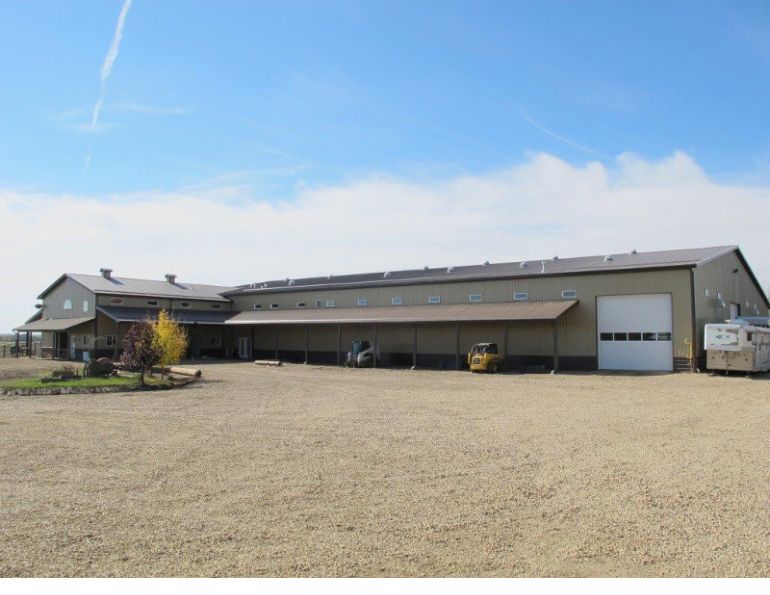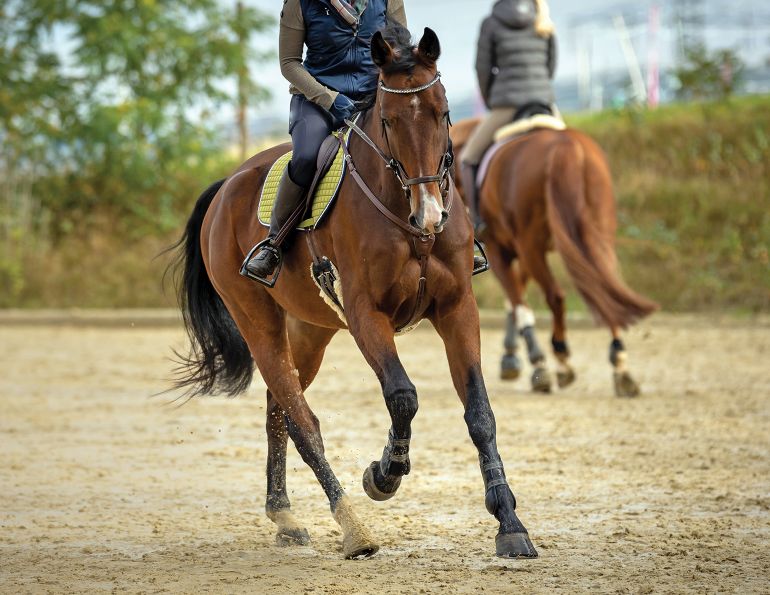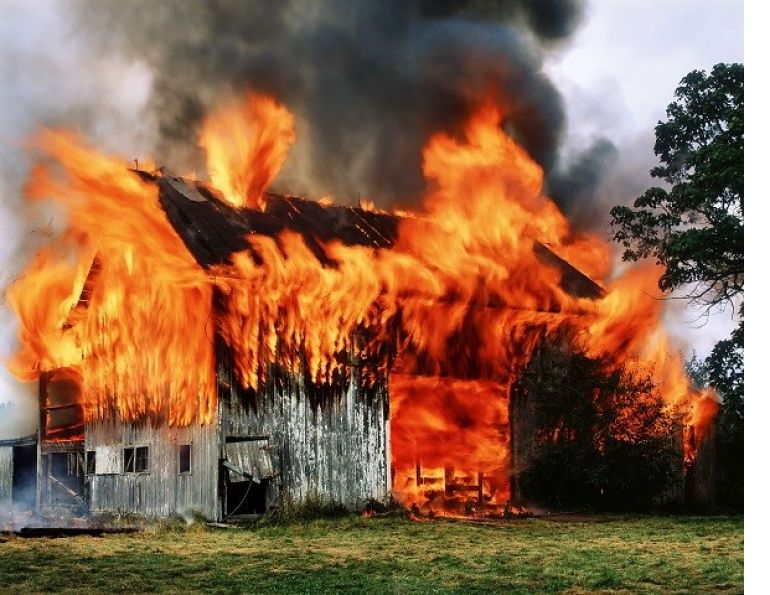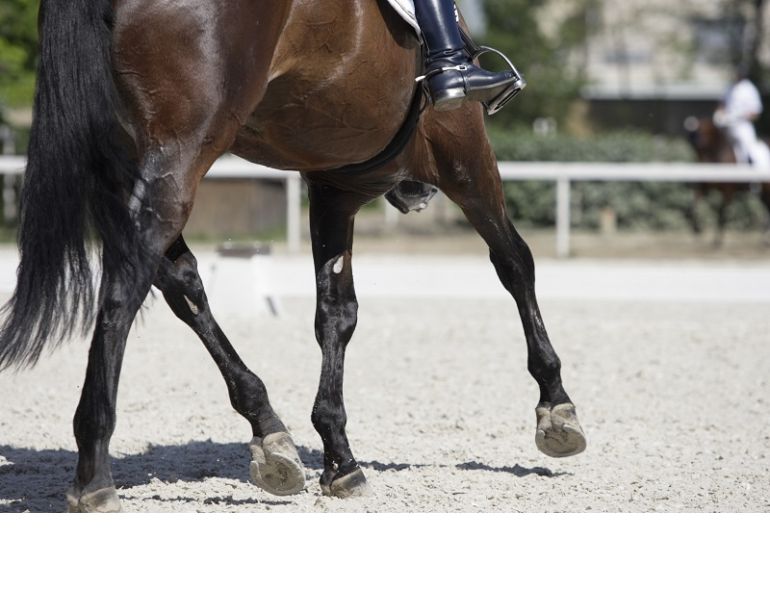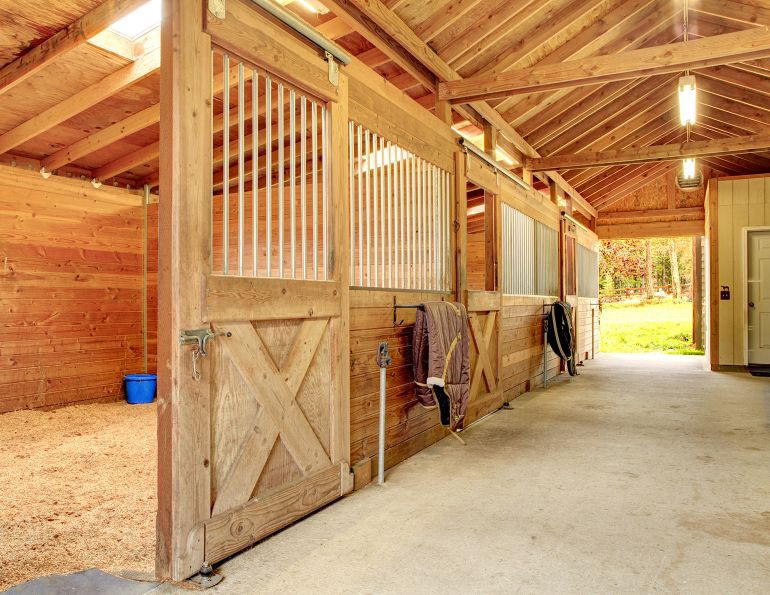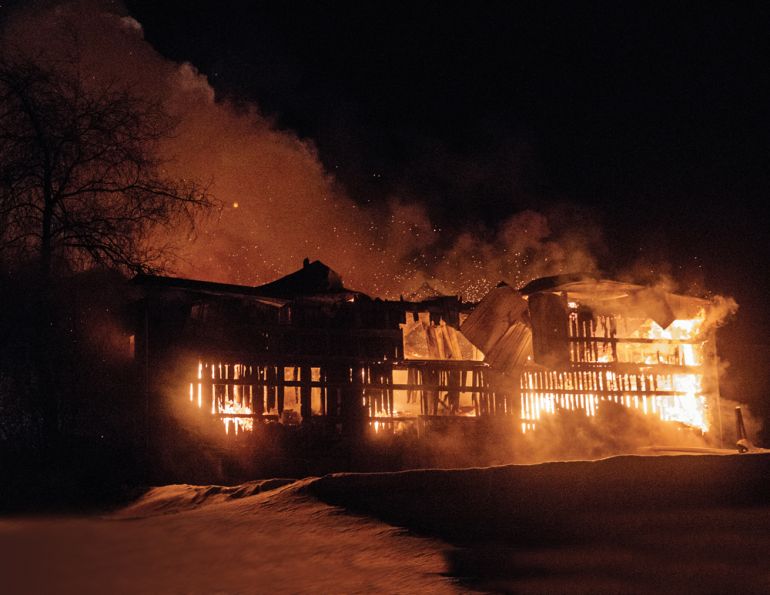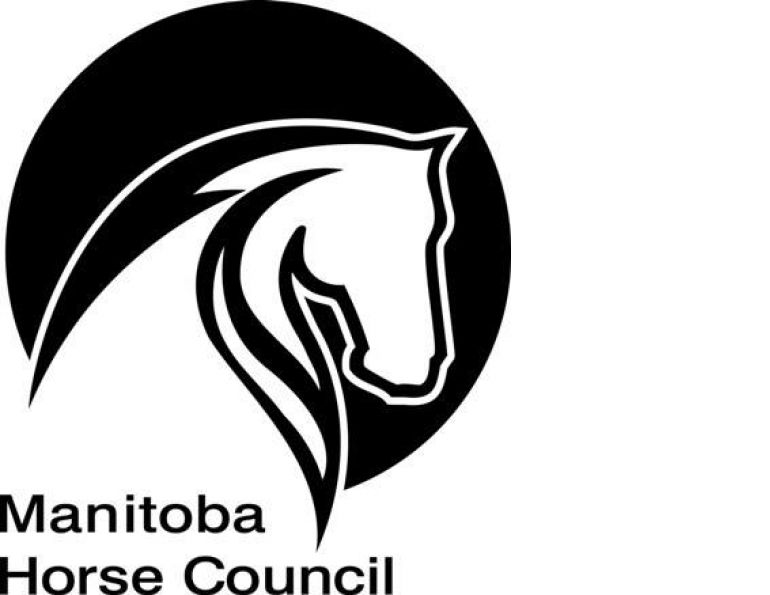By Margaret Evans
Time was, people dumped sand or hog fuel in a contained area, spread it out, and an arena was made. Today, the roll-out arena is long gone. Riding arenas are now construction projects based on sound engineering, state-of-the-art materials set down in critical layers, and building protocols, all with the horse’s safety and soundness uppermost in mind.
“Years ago, the options for footing were limited in what was available on the marketplace,” says Cynthia Brewster-Keating with GGT™ Footing, the equestrian division of Polysols Inc. These included stone dust, which is very abrasive to the hoof, and wood chips, which are dusty and do not last very long. She adds that over time, more clients have become educated on using additives that last longer and support the horse on the sand better than previous products.

Footing depth and composition varies greatly among disciplines, and it is important to understand how surface properties affect the horse. Photo: Shutterstock/PromaM
Today, riding disciplines are extremely diverse from hunter/jumper, dressage, and gymkhana games to reining, cutting, roping, barrel racing, and team penning, as well as equitation and horsemanship. To say we are discipline-centric is an understatement. Yet in so many barns and riding facilities, arenas are expected to provide optimum conditions for grip, cushioning, and safety for the horse and rider regardless of the relentless day-to-day use, not to mention weekend schooling shows and clinics. Add to that the assault that arenas receive from extreme weather and a changing climate – rain, snow, ice, heat, and drought – and it is no wonder that surfaces are constantly under threat of breakdown. Getting ahead of the curve comes down to understanding how the surface changes with use, and how maintenance is critical to mitigating all the stresses placed upon it.
Related: Get a Horse on a Track System
“Arena surfaces are a major investment and it is crucial to understand how the surface properties will affect the horse,” says Carolyne Tranquille, equine orthopaedic research assistant with Animal Health Trust, Newmarket, Suffolk, UK. “Different materials can provide similar surface properties (firmness, grip, cushioning, and responsiveness) and it is essential to understand how surface properties can change with use and maintenance. With this knowledge, the properties of a surface of a given arena can be customized with different maintenance techniques to meet the varying expectations of the different disciplines. For example, a surface used for dressage needs to be stable; a surface used for jumping needs to be stable for the take-off but needs to allow the hoof to slide on landing; and for Western reining the surface needs to allow a considerable amount of slide. It is difficult for a single arena to accommodate all these differences, but it is possible by correctly preparing the surface for each discipline.”
Tranquille has been with the Animal Health Trust since 2005 and recent research has included working with a team at the Swedish University of Agricultural Science in Uppsala, focusing on evaluating the effects of arena surfaces and training intensity on the orthopaedic health of horses.
“Equestrians are now more aware and knowledgeable of the affect and direct impact footing can have on your horse and on the riders,” says Alysha Sauve, sales and marketing manager, ReitenRight Equestrian Inc., in Delta, British Columbia. “We are also more cognizant of what our footing is comprised of and if there is a risk of any airborne toxins that could affect both horses and riders.”
Sauve says that, to best protect your horse’s legs from shock impact, you want to ensure your footing improves the cushion and energy return efficiently.
“Some types of additives and/or sands can begin to pack over time leading to a sticky or harder riding surface,” says Sauve. “Riders, trainers, and veterinarians have seen the impact on how some footing can increase the risk of soft tissue damage. Fibre additives can be wonderful for binding a shifting/loose footing, while a rubber additive can drastically increase cushion and energy return and even reduce packing in older or high traffic arenas.”
Understanding all the subtle influences of a surface on a horse’s limb health comes down to understanding equine biomechanics and how horses move, not only from one gait to another but also during turning, circling, sliding, and the shock impact of jumping.
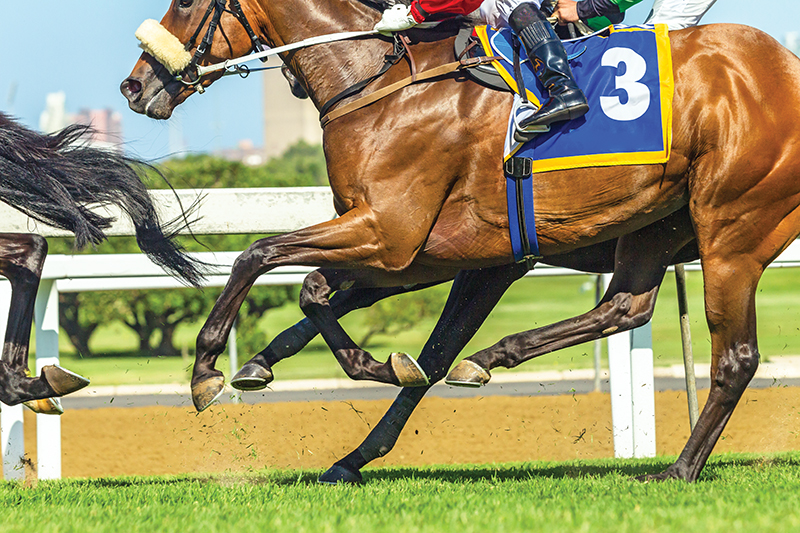
Research has shown a correlation between track surfaces and injury and death statistics of Thoroughbred racehorses, with horses on turf suffering fewer fatal injuries than their counterparts on dirt surfaces. Photo: Shutterstock/ChrisVanLennepPhoto
The critical issue of arena surfaces, horses’ performances, and mitigation of the threat of lameness has been under scrutiny for well over a decade. In 2007-2008, the Swedish University of Agricultural Sciences (SLU) began a project financed by the International Federation for Equestrian Sports (FEI), World Horse Welfare, and the Swedish Foundation for Equine Research, aimed at evaluating equestrian arenas and their surfaces from the perspective of improved welfare and orthopaedic equine health. The project led to the publication by the FEI of the White Paper on Equestrian Surfaces. The White Paper led to further studies financed by the FEI, and in 2014 the Swedish Equestrian Federation published Equestrian Surfaces – A Guide with the FEI financing the translation to English.
Among the takeaways of the Guide are the recognition that similar surface properties can be obtained with different materials; it is the properties of a surface rather than the materials it is composed of that affect the horse; the risk of injury is determined very much by how the surface is used; a riding surface is only as good as its maintenance program; and water is one of the most important elements influencing an arena’s properties.
Related: Reduce the Risk of Crystalline Silica Dust in Riding Arenas
Laying down an arena surface may seem simple at first. But it can be critically complex.
“With footing, there are a lot of issues that have more than one solution and the best one depends on the individual circumstances,” says Hilary Clayton in an email correspondence. “Cost is important and there seems to be no limit to how much you can spend.”
In 2014, Clayton retired from her position as the Mary Anne McPhail Dressage Chair in Equine Sports Medicine at Michigan State University’s College of Veterinary Medicine and is currently a speaker, author, and consultant in the area of equine sport science. Clayton, along with Tranquille, was a member of the International Review and Biomechanical Collaboration Group assessing the White Paper Equestrian Surfaces – A Guide.
In some ways, the stresses on horses are similar to the stresses people experience walking, jogging, and running. While walking, including speed walking, is low impact aerobics with a foot on the ground at all times, jogging and running have the shock factors which can lead to osteoarthritis, hip, knee, and foot problems, as well as cartilage damage.

During the three-phase sequence of the horse’s stride, there are constant forces at play on bones, ligaments, tendons, joints, connective tissue, and hooves. A properly structured arena surface is designed to allow the horse to move comfortably through the three phases of the stride while minimizing concussion, adequately absorbing shock, providing support, and returning energy. Photo: ReitenRight
Three phases define a horse’s motion as it connects with any surface whether walking, trotting, cantering, jumping, or turning. In each stride, as the leg reaches forward and down for landing, the hoof connects with the ground. That connection causes the hoof to momentarily stop as it slides forward and downward into the surface, the depth depending on the speed and activity. At a micro level, bones in the leg “collide” and, depending on speed, the concussion can send vibrations up the leg. In the loading phase, the weight of the horse’s body and the rider’s body compress down on the hoof as the fetlock, flexor tendons, and suspensory provide essential shock absorption. The intensity of that weight will vary depending on whether the horse is walking, galloping, or landing after a jump. The roll-over phase is the moment when the hoof pushes away from the ground as the heel lifts and rolls over the toe leading to the next stride. The three-phase sequence is the result of the brilliant evolutionary adaptation of the horse’s single hoof and flying leg to be able to take the constant forces playing on bones, ligaments, tendons, joints, connective tissue, and the complex structure of the hoof itself.
The whole point of a properly structured arena surface designed with firmness, cushioning, and grip is to allow the horse to move comfortably through these endless three phases to minimize concussion, adequately absorb shock, provide support, and return energy.
“Arena surfaces play an important role in the musculoskeletal health of the sport horse, which may have to perform on grass and artificial surfaces,” says Tranquille. “Soft, deep, and unstable surfaces may require more effort from the horse and could potentially be associated with earlier fatigue of the soft tissues (muscles, tendons, and ligaments). Hard surfaces can be associated with greater impact damage, potentially increasing the risk for bone, joint, and foot-related injuries. Consistency and uniformity across a single arena are also important considerations. We have previously shown that horses working at a trot make significant gait alterations in response to small changes in surface properties. An inconsistent surface could cause the horse to make frequent alterations in his gait, potentially leading to more rapid fatigue and increasing the risk of injury.”
Understanding the biomechanics of the horse’s hoof has been the focus of research by Prof. Jeffrey Thomason, Ontario Veterinary College, University of Guelph, who has expertise in Thoroughbred racetrack surfaces, who co-authored Racing Surfaces – White Paper, and who, too, was a member of the collaboration group assessing the White Paper Equestrian Surfaces – A Guide.
“There are interesting correlations on track surfaces and racehorses, and we have the injury and death stats from The Jockey Club Equine Injury Database (EID) to work with,” says Thomason. “With this we can look at the frequency of death or injury on turf vs dirt vs artificial track.”
According to The Jockey Club’s 2017 database, there was a modest increase in the rate of fatal injury in that year (1.61 per 1,000 starts) compared to 2016 (1.54 per 1,000 starts). On turf surfaces there were 1.36 fatalities per 1,000 starts in 2017, compared to 1.09 in 2016. On dirt surfaces there were 1.74 fatalities per 1,000 starts in 2017, compared to 1.7 in 2016. On synthetic surfaces, the rate of fatal injuries remained stable at 1.1 fatalities per 1,000 starts.
Related: Good Hoof, Bad Hoof.

During the three-phase sequence of the horse’s stride, there are constant forces at play on bones, ligaments, tendons, joints, connective tissue, and hooves. A properly structured arena surface is designed to allow the horse to move comfortably through the three phases of the stride while minimizing concussion, adequately absorbing shock, providing support, and returning energy. Photo: ReitenRight
However, since the EID began collecting data in 2009, there has been a 20 percent drop in the risk of fatal injury across all surfaces; a 17 percent drop in risk of fatal injury on dirt; and a 30 percent drop in risk of fatal injury on turf. The stats are based on injuries that resulted in fatalities within 72 hours from the date of the race, and are for official Thoroughbred races only, excluding steeplechase races.
“Our records show that turf is definitely better than a dirt track,” says Thomason. “Slippage is only there if the grass is too long and too wet. You have to keep it mowed so that the blades of grass provide grip, but the hoof can go down to the base.”
He says that, when looking at the many different disciplines of riding, each one has different needs and they are very widespread. While there is clearly a link between injuries and what causes them, greater understanding is needed between the disciplines and the biomechanical effects so that there is a clearer picture of what is happening inside the horse’s leg.
“At the moment, I’m looking at the outside [of the hoof],” says Thomason regarding his study using sensors placed on the hoof wall. “What changes are happening to the hoof? I am recording the shock as the hoof hits the ground, the orientation, magnitude, and varying forces. What happens to the hoof when the horse is going in a clockwise circle and a counterclockwise circle? In other words, all the different things we ask of the horse (cantering, lead changes, etc.), what are their effects and what is the effect when performing on different surfaces? [It requires] following a lot of horses, recording their mechanics, recording their injuries. The study gives me a direct way of correlating injuries with mechanics in any given discipline and on what kind of surface. There’s a ways to go yet.”
Thomason notes that each surface has its own characteristic effect and the challenge is to come up with footing solutions that meet the demands of each discipline while prioritizing injury prevention. Clearly, what works for a private boarding facility won’t hold up at a busy training centre. But the need for cushioning is central to all arenas since that is the one hedge against concussion leading to soft tissue injuries. He says that the frequency of harrowing to maintain that cushion effect is directly proportional to the amount of time the arena is used.
Thomason’s research has been funded by a variety of agencies and organizations including Equine Guelph, Footing First, Grayson Jockey Club, and the Natural Sciences and Engineering Research Council of Canada (NSERC).
Many riders today are connecting the dots that training needs to include conditioning on the same type of footings that competitions are held on. The more the horse is conditioned to the surface, the better and safer the performance.
“Nowadays many private farms have made the investment and the smart choice to invest in the same type of footings as most of the competitions that they attend,” says Brewster-Keating. “If you go to a competition that is running on hard surface or running on grass, it is definitely possible that a horse that has been trained on proper footing will experience stress and strain. Today, most clients that are competing at a high level are using ice boots and poultice on the horses’ feet, as well as proper wrapping overnight. High level competitors are usually searching out horse shows that have upgraded their footing and in the end most shows recognize that they will lose clients and entries if they do not have proper footing.”
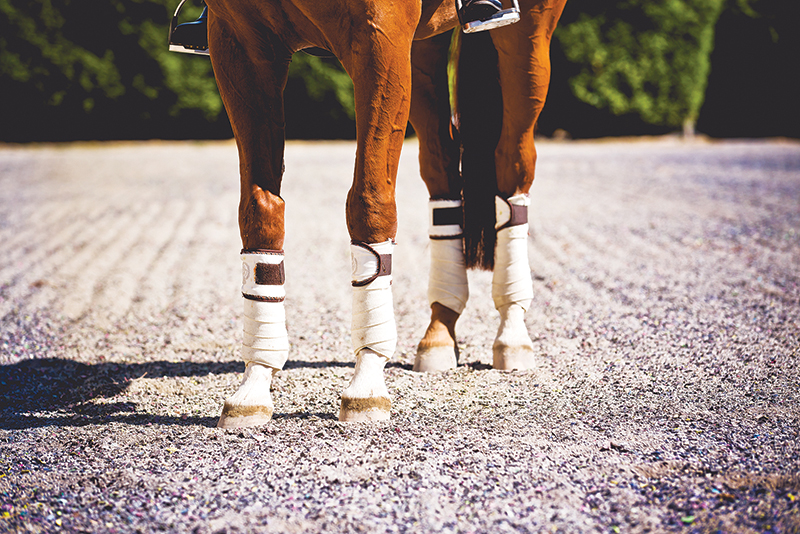
The arena surface should be level, with consistent and uniform footing across the entire arena. Horses will alter their gaits in response to small changes in surface properties, increasing fatigue and risk of injury. Photo: ReitenRight
Brewster-Keating says it is important that all horses are trained in such a way that they are prepared for the fitness level required for the discipline that they will be asked to perform, and a well-conditioned horse with good muscle tone and tight tendons will be able to manage themselves on an inferior footing for a short time frame in better condition than one that has not properly built up muscle tone and tendon strength.
“Building an arena is truly an art,” says Sauve. “First and foremost, invest in your base! Without a good base you will struggle to maintain a level and well-drained arena. It’s like the old saying ‘no foot no horse.’ Choose your sand with your discipline and traffic volume in mind. It is always better to start with less sand and add as needed. If you create a footing that is too deep, you will be spending unnecessary funds to remove some of your footing while putting the horse and rider at risk. As you investigate the best footing additive for your arena, be aware of what you are trying to achieve and ask questions on performance, longevity, and if it contains any toxins that could be harmful for both horse and rider.”
Related: Building an Environmentally Sound Riding Ring
She adds that both horses and riders feel the impact on every surface they ride on. “If you are actively competing, you will be riding on different types of footing. It is not uncommon for a large competition venue to have two or more types of footing in various arenas. One may be a sand arena while another may have a fibre additive, which can give you and your horse a different feeling. If a footing is unforgiving, too deep, or unstable, it can cause excess stress on your horse. Competition venues do their best to provide quality and well-maintained footing for you and your horse to have a great experience.”
Everything starts with the foundation.
“It is critical that the foundation is level (or has a slight incline to assist with drainage) and that the same material is used beneath the entire arena for consistency,” says Tranquille. “Certain materials, such as crushed concrete, are not suitable to use as a foundation as they are very unstable and may become packed together to prevent drainage. Limestone creates a more stable base, and therefore a more stable top layer. The material used as the foundation will also affect the moisture-holding capacity of the top layer. Materials that retain water, such as clay, can be used to prevent the surface drying out; these can be useful in dry climates and also indoor arenas. In wetter climates, materials such as limestone and lava stone promote drainage. It is important to choose a foundation material which is appropriate for the local climate.”
She says that establishing a good drainage system results in a more consistent surface for the horse to move on. The system must be installed in a way that ensures the entire arena drains evenly and adequately, and has an ability to recover quickly from rainfall. With climate change now bringing heavy storm events and sometimes punishing rain, arenas are under greater challenges to adequately meet and survive these conditions.
“Perforated pipes dug into the ground or drainage channels containing small stones are commonly used beneath the surface, with a geotextile membrane placed between the base and the top layer,” she says. “This membrane is helpful to limit the amount of sand grains that could sift down and block the drainage system. When designing the arena, it is important to ensure there is access to the perforated pipes for cleaning should they get blocked.”
Tranquille says that the quality of a sand layer depends on important factors like particle size, shape, and type. Sand particles that are coarse and round can be loose and result in an unstable surface causing the horse to trip or lose balance. However, sand that is made up of fine, angular particles can adhere to each other and provide stability. She says that the source of the sand is also important as that dictates its hardness and durability.
“A quartz-based sand is harder and will therefore last longer than a soft sand such as calcite. Adding rubber and/or fibre can reduce compaction of the sand, limit the evaporation of water, and improve stability of the surface. However, the size and mixture of additional components can affect the surface properties. The amount of fibre added will significantly affect the shear strength, and therefore grip and stability, of a surface. For example, surfaces used for competitions might benefit from more grip (to allow the horse to travel at higher speeds) than those used by leisure riders. Consequently, an arena used for competition might require a higher proportion of fibre than an arena used at a riding school. Epidemiologic data suggests that rubber chunks are preferable to rubber strips and that uniformity of the surface can be maintained more easily if the rubber is used as a top layer rather than being mixed in with the sand. Wax and polymers can also be added to increase the stability of a surface or one that has problems with drying out.”
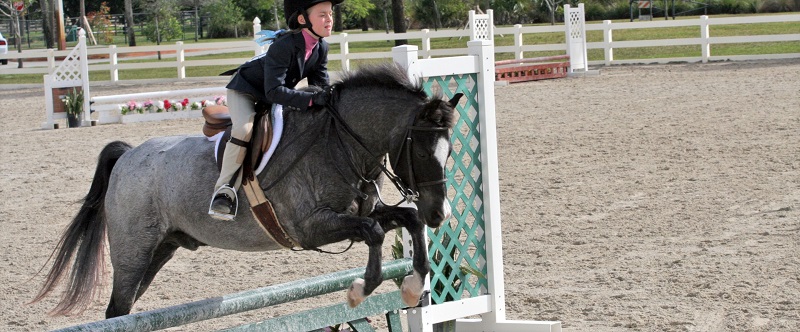
Today’s riding arena footings are expected to provide optimum conditions during regular day-to-day use as well as weekend clinics and schooling shows, sometimes by multiple disciplines, while withstanding the assault of changing weather conditions. Photo: GGT Footing™/Drew Discount
For the top layer, Tranquille says that the decision rests on answers to the following questions, which will be driven by individual requirements: What is the arena being used for? What maintenance is required? What is the local climate? Is the arena indoors or outdoors?
“There are a number of things the top layer should do including provide the horse with an even and stable surface to work on; allow the hoof a certain amount of slide at touchdown but still provide enough grip to maintain the confidence of the horse and rider; and reduce the shock at impact. Sand is generally the main ingredient, but this can be mixed with synthetic materials such as fibre, rubber, or wax to modify the surface properties. In short, there is no ideal material to use as a top layer as this will differ based on individual requirements.”
Regular arena maintenance is important to ensure stability and consistency but to also help the surface last longer. The maintenance schedule must be appropriate for the arena’s use. “Superficial harrowing of a sand and rubber surface appears to redistribute the rubber to the top of the surface and improve its stability, but it is only effective in the top five centimetres of the surface,” says Tranquille. “However, superficial harrowing appears to be ineffective in improving uniformity across the arena because this is often influenced by the characteristics of the deeper layers, which it does not reach. Therefore, regular deep harrowing in combination with superficial harrowing may be indicated to keep the entire depth of surface consistent.”
She adds that watering a sand-and-fibre surface improves the stability and uniformity, and that may help the horse maintain balance and reduce the risk for surface instability–related injuries. Findings from recent studies suggest that the horse is sensitive to changes in surface properties, both between arenas and within a single arena. Therefore, uniformity in surface properties across an arena should be an important goal in surface management. Large changes in surface properties can result in frequent gait changes by the horse, which could cause the horse to tire more quickly and would have negative implications for performance and risk of injury.
Maintaining arena surfaces today is greatly challenged by climate change.
“We are seeing more extreme weather conditions, which has made our customers need to utilize dust-absorbing products and also better irrigation systems,” says Brewster-Keating. “With the cold, extreme weather you will see more people using calcium chloride, especially in indoor arenas to prevent the footing from freezing. We also see more and more people going to a polymer-coated footing that does not require water at all.”
Clearly, arenas today are far more complex than the hog fuel base of years ago. They are designed to prevent injury to horses and to ensure safety for the rider.
“If you want a top-quality arena to minimize injury to horses, get someone to build it who has the reputation,” advises Thomason. “Ask them what their approach is, what is their track record, what is the quality and longevity of the arenas they have built, have they got clients who have arenas you could look at? Do your research. Do it like buying a house.”
Reduce Exposure to Deadly Dust in Riding Arenas
Source: WorkSafeBC
Exposure to crystalline silica dust in riding arenas presents health hazards for horse riders, trainers, coaches, and horses. They are at risk for several respiratory conditions if they work primarily in a riding arena or round pen with sand footing, as almost all sand contains crystalline silica. As the horses work, they disturb the silica, producing a fine, airborne silica dust.
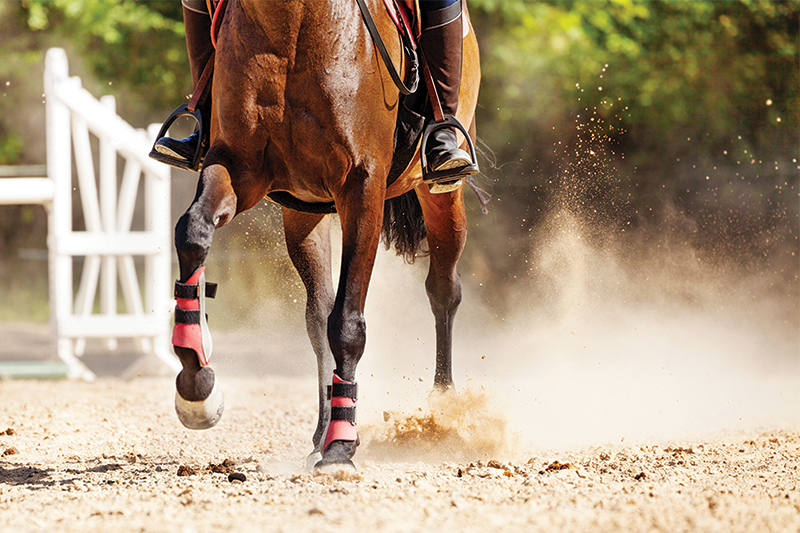
Photo: Dreamstime/Sergey Novikov
In one case, a trainer was exposed to crystalline silica dust while working seven to twelve horses a day in a sand longeing arena for more than two decades. He died of lung cancer, linked to that exposure. Prolonged exposure can also lead to silicosis, a lung disease that can be fatal, or chronic obstructive pulmonary disease in both humans and horses.
WorkSafeBC has produced a new Bulletin explaining the hazards, suggesting ways to prevent exposure, and outlining the need for an exposure control plan.
To review the WorkSafeBC Bulletin Reducing the risk of exposure to crystalline silica dust for horse trainers and riding coaches, visit www.WorkSafeBC.com.
Related: How Does Footing Affect Fitness in Horses?
To read more by Margaret Evans on this site, click here.
Main photo: Shutterstock/Rolf Dannenburg







